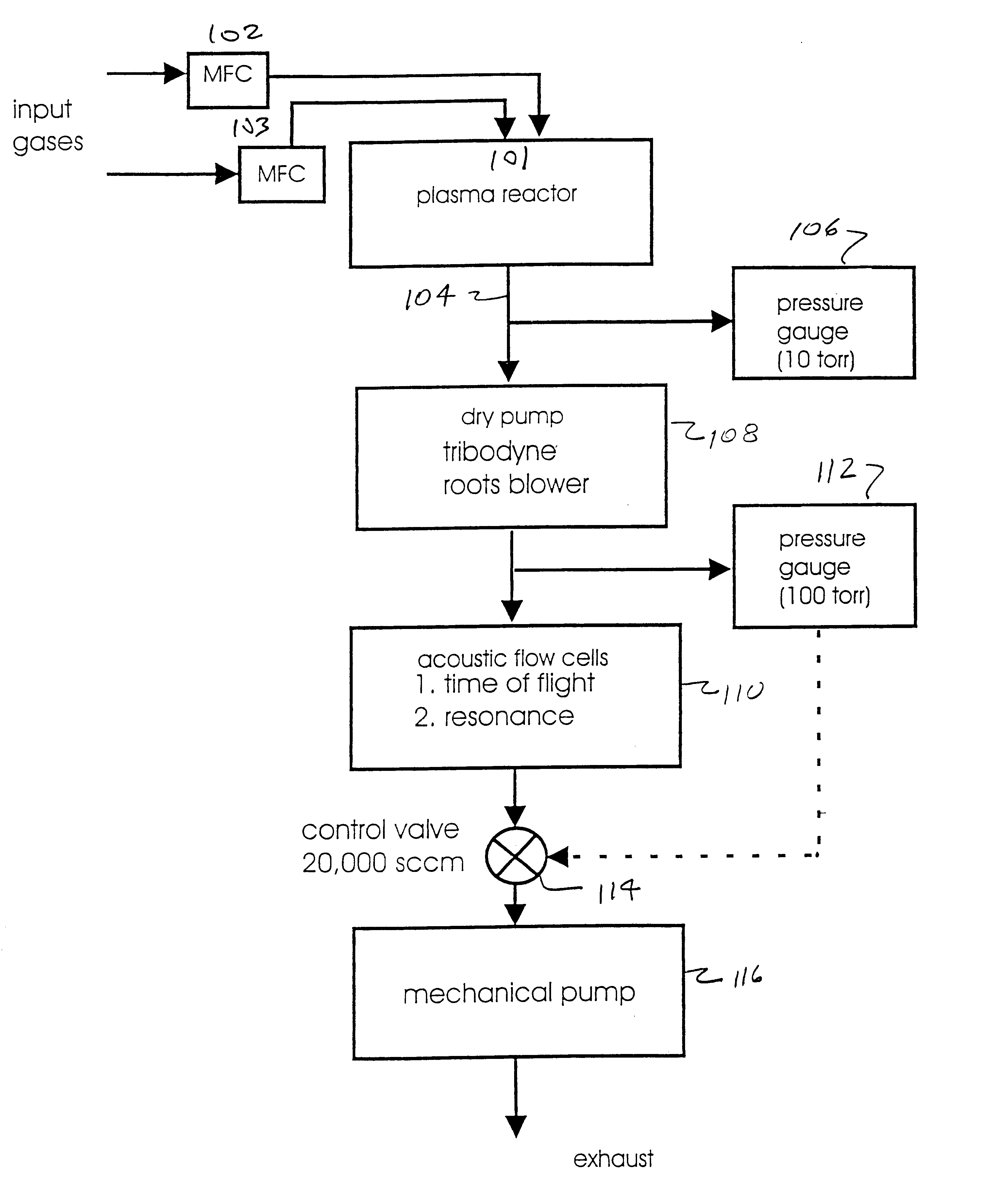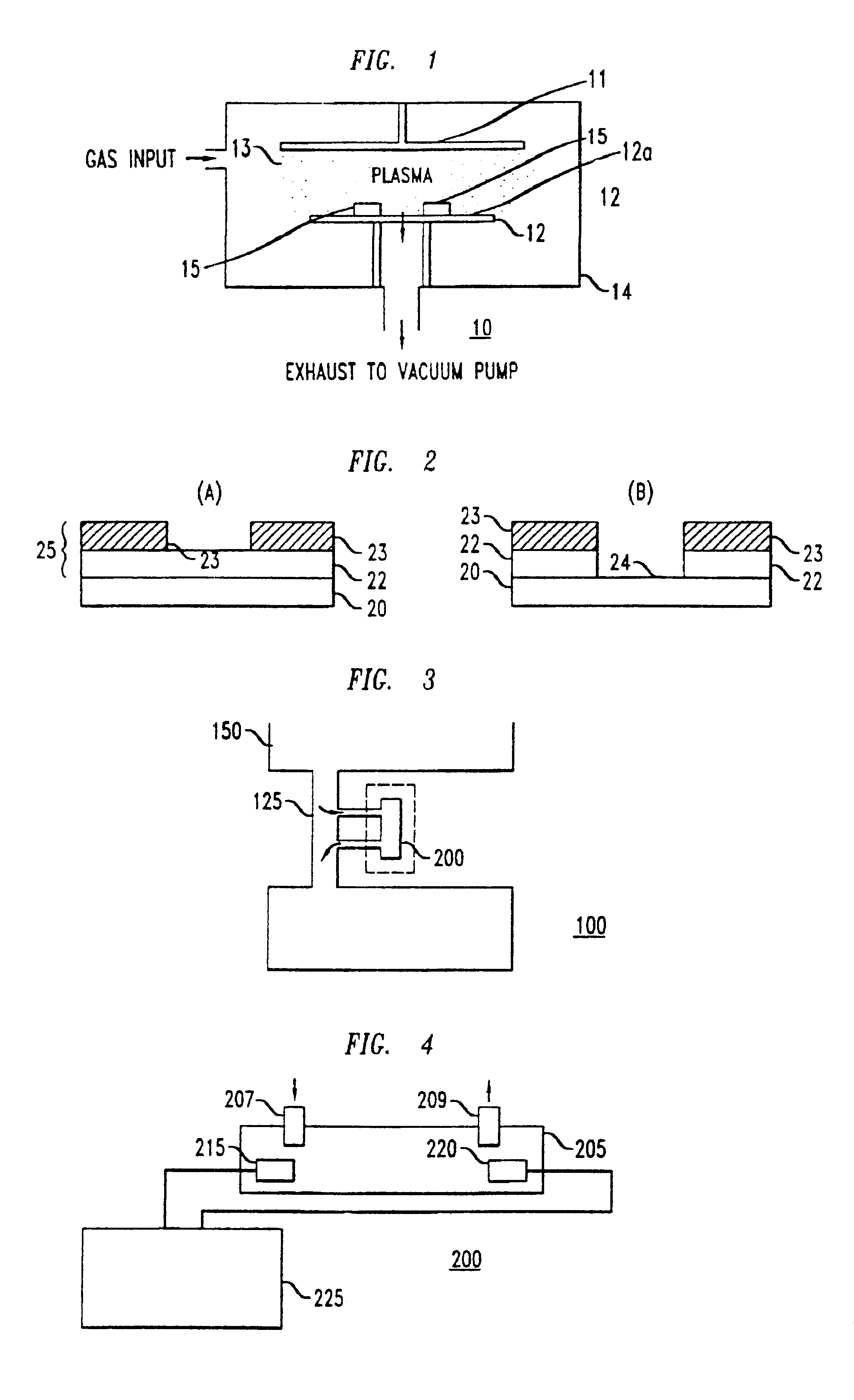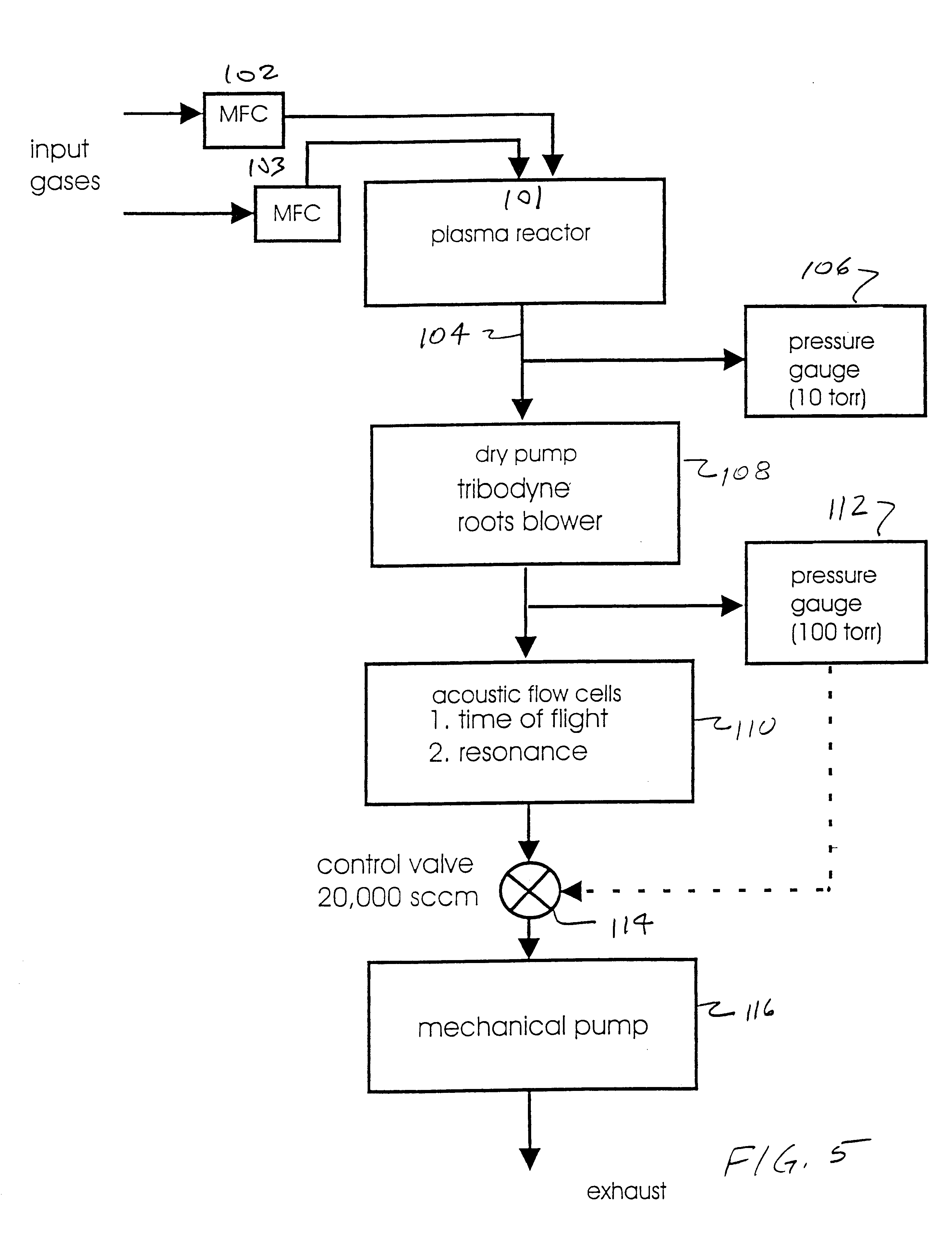Acoustic time of flight and acoustic resonance methods for detecting endpoint in plasma processes
a plasma process and acoustic resonance technology, applied in the field of acoustic time of flight and acoustic resonance methods for detecting endpoints in plasma processes, can solve problems such as endpoint detection variability, and achieve the effect of reducing the molecular density of gas molecules in gas and increasing the mean free path
- Summary
- Abstract
- Description
- Claims
- Application Information
AI Technical Summary
Benefits of technology
Problems solved by technology
Method used
Image
Examples
example 2
The acoustic cell described in Example 1 was filled with air that had a temperature of about 25.degree. C. The air in the acoustic cell was kept at a pressure of about 20 torr. Acoustic signals were transmitted a distance of about 3 inches from the transmitter to the detector, according to the same conditions described in Example 1.
A DSA Model 602 digitizing signal analyzer was used to monitor the acoustic signals transmitted through the air in the acoustic cell. A trace from the digitizing signal analyzer is illustrated in FIG. 12. The pulse, denoted as 910, is the transmitted acoustic signal. The pulse, denoted as 915, is the detected acoustic signal. FIG. 12 illustrates the capability of transmitting acoustic signals through air at pressures of about 20 torr.
example 3
The acoustic cell described in Example 1 was filled with tetraethyl orthosilicate (TEOS) gas in oxygen that had a temperature of about 32.degree. C. The TEOS gas in the acoustic cell was kept at a pressure of about 14 torr.
Acoustic signals which had a frequency of about 200 kilohertz were transmitted through the TEOS gas in the acoustic cell from the transmitter to the detector with a repetition rate of about 100 hz. The acoustic signals traveled a distance of about 3 inches from the transmitter and the detector.
A DSA Model 602 digitizing signal analyzer was used to monitor the acoustic signals transmitted through the TEOS gas in the acoustic cell. A trace from the digitizing signal analyzer is illustrated in FIG. 11. The pulse, denoted as 940, is the transmitted acoustic signal. The pulse, denoted as 945, is the detected acoustic signal. Additional pulses shown on the trace which surround those denoted as 940 and 945 are attributed to noise from the acoustic cell. FIG. 11 illustrat...
PUM
 Login to View More
Login to View More Abstract
Description
Claims
Application Information
 Login to View More
Login to View More - R&D
- Intellectual Property
- Life Sciences
- Materials
- Tech Scout
- Unparalleled Data Quality
- Higher Quality Content
- 60% Fewer Hallucinations
Browse by: Latest US Patents, China's latest patents, Technical Efficacy Thesaurus, Application Domain, Technology Topic, Popular Technical Reports.
© 2025 PatSnap. All rights reserved.Legal|Privacy policy|Modern Slavery Act Transparency Statement|Sitemap|About US| Contact US: help@patsnap.com



